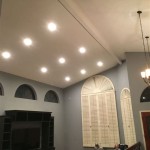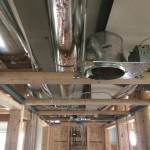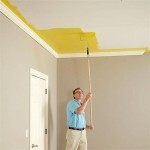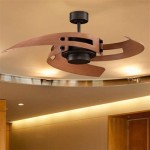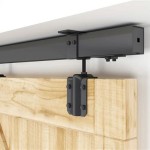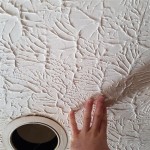Installing a Ceiling Fan on a Slanted Ceiling: A Comprehensive Guide
Installing a ceiling fan can significantly improve air circulation and energy efficiency within a living space. However, installing a ceiling fan on a slanted or angled ceiling presents unique challenges compared to a standard horizontal installation. Careful planning, the right equipment, and adherence to safety guidelines are essential for a successful and secure installation. This article provides a comprehensive guide on installing a ceiling fan on a slanted ceiling, covering the necessary preparations, required materials, step-by-step installation procedures, and critical safety considerations.
A slanted ceiling, also known as an angled or cathedral ceiling, has a pitch that deviates from a perfectly horizontal plane. This pitch necessitates the use of specialized mounting hardware and installation techniques to ensure the fan hangs correctly and operates safely. Ignoring the angle of the ceiling can lead to instability, wobbling, and even the potential for the fan to detach from the ceiling.
Key Point 1: Pre-Installation Assessment and Planning
Before commencing the installation process, a thorough assessment of the site and meticulous planning are paramount. This stage involves evaluating the ceiling's structure, determining the optimal fan placement, and ensuring compliance with local building codes.
Ceiling Structure Evaluation
The first step is to determine the structural integrity of the ceiling. A ceiling fan, particularly with light fixtures, can be quite heavy. It is crucial to ensure the electrical box is securely mounted to a structural member, such as a ceiling joist. Standard electrical boxes are typically not designed to support the weight and dynamic forces generated by a rotating ceiling fan. If the existing electrical box is not fan-rated, it must be replaced with a fan-rated box specifically designed to handle the load. This box should be securely attached to a joist or a bracing structure designed to distribute the weight appropriately. Accessing the attic space above the ceiling can provide a clearer view of the ceiling structure and allow for reinforcement if needed.
Furthermore, the angle of the ceiling influences the choice of downrod. A steeper angle requires a longer downrod to ensure the fan blades have sufficient clearance from the ceiling. Insufficient clearance can restrict airflow and potentially damage the fan or the ceiling.
Optimal Fan Placement
Determining the optimal location for the ceiling fan is crucial for maximizing its effectiveness. The fan should be centrally located within the room to ensure even air distribution. Additionally, the fan blades should be at least 7 feet above the floor to prevent accidental contact. When installing on a slanted ceiling, the placement should also consider the aesthetics and the overall balance of the room. Avoid placing the fan too close to walls or other obstructions, as this can impede airflow and create unwanted noise.
Building Code Compliance
It is imperative to check local building codes and regulations before installing a ceiling fan. These codes often specify requirements for electrical wiring, ceiling fan weight limits, and other safety standards. Failure to comply with these codes can result in fines and potential safety hazards. Contacting the local building department or consulting with a qualified electrician can help ensure compliance.
Also, consider the accessibility of the wiring. If new wiring is required, it should be performed by a licensed electrician to ensure it meets safety standards and is appropriately grounded. Never attempt electrical work if unfamiliar with electrical systems. Improper wiring can lead to electrical shock or fire hazards.
Key Point 2: Selecting the Right Materials and Tools
Choosing the appropriate materials and tools is just as important as planning. Using the correct components ensures a secure and long-lasting installation. This includes selecting an adequate downrod, appropriate mounting hardware for the ceiling angle, and necessary safety equipment.
Downrod Selection
The downrod connects the ceiling fan motor to the mounting bracket. For slanted ceilings, a longer downrod is usually necessary to ensure sufficient clearance between the fan blades and the ceiling. The length of the downrod depends on the angle of the ceiling and the desired height of the fan. A general rule is to use a downrod long enough to keep the fan blades at least 10 to 12 inches away from the ceiling. Consult with the fan manufacturer's specifications for recommended downrod lengths based on ceiling pitch. Some manufacturers offer specialized downrods designed explicitly for angled ceilings, featuring adjustable ball joints that allow the fan to hang level even with a significant slope.
Mounting Hardware
Standard ceiling fan mounting brackets are typically not suitable for slanted ceilings. Instead, specialized mounting brackets designed for angled installations are required. These brackets often feature a swivel or ball-and-socket joint that allows the fan to hang level regardless of the ceiling's angle. Ensure the mounting bracket is compatible with the fan model and rated to support the fan's weight. The bracket should be securely attached to the fan-rated electrical box and the ceiling joist using lag screws or other appropriate fasteners. It is important to use the hardware provided by the fan manufacturer. Using generic hardware can compromise the safety and stability of the installation.
Essential Tools
A successful ceiling fan installation requires a variety of tools, including: * Screwdrivers (Phillips head and flathead) * Wire strippers * Wire connectors (wire nuts) * Pliers * Electrical tape * Voltage tester * Ladder * Drill (with appropriate drill bits) * Stud finder * Level * Measuring tape * Safety glasses * Work gloves
The stud finder will help locate the ceiling joists to ensure that the mounting bracket is securely attached. The voltage tester is crucial for verifying that the power is turned off before working on any electrical wiring. Safety glasses and work gloves are essential for protecting eyes and hands during the installation process.
Key Point 3: Step-by-Step Installation Procedure
Following a systematic step-by-step procedure will minimize errors and ensure a safe and secure installation. Prioritize safety at all stages of the installation process.
Step 1: Disconnect Power
Before starting any electrical work, turn off the circuit breaker that controls the ceiling fan's wiring. Use a voltage tester to confirm that the power is completely off. This step is crucial for preventing electrical shock. Do not rely solely on the switch to cut off the power, as wiring errors can sometimes bypass the switch.
Step 2: Remove Existing Fixture (if applicable)
If replacing an existing light fixture, carefully remove it. Disconnect the wires, taking note of their colors and connections. Typically, black is the hot wire, white is the neutral wire, and green or bare copper is the ground wire. Labeling the wires with tape can help prevent confusion during re-wiring.
Step 3: Install the Mounting Bracket
Attach the specialized mounting bracket designed for slanted ceilings to the fan-rated electrical box and the structural ceiling joist. Use lag screws or other heavy-duty fasteners to ensure the bracket is securely mounted. Confirm that the bracket is level using a level tool. This step is critical for ensuring the fan hangs correctly and operates smoothly.
Step 4: Assemble the Fan Motor and Downrod
Assemble the fan motor and downrod according to the manufacturer's instructions. Feed the fan's wires through the downrod. Ensure the downrod is securely attached to the fan motor using the provided hardware. The downrod should have enough length for the ceiling angle.
Step 5: Hang the Fan Motor Assembly
Carefully lift the fan motor assembly and hang it from the mounting bracket. Most mounting brackets have a hook or loop that allows the fan to hang freely while wiring connections are made. This feature greatly simplifies the wiring process.
Step 6: Wire the Fan
Connect the fan's wires to the corresponding wires in the electrical box. Typically, connect black to black (hot), white to white (neutral), and green or bare copper to green or bare copper (ground). Use wire connectors (wire nuts) to secure the connections and wrap them with electrical tape for added insulation. Ensure all connections are tight and secure to prevent loose wires, which can cause electrical problems. Double-check all wiring, and refer to the manufacturer’s wiring diagram to check for correct wiring.
Step 7: Secure the Canopy
Slide the canopy up to cover the mounting bracket and secure it in place with the provided screws. The canopy should fit snugly against the ceiling. Some canopies have adjustable features to accommodate slight irregularities in the ceiling surface.
Step 8: Attach the Fan Blades
Attach the fan blades to the fan motor using the provided screws and hardware. Ensure all blades are securely attached and properly aligned. Loose blades can cause wobbling and noise. Follow the manufacturer’s instructions for blade attachment.
Step 9: Install Light Kit (if applicable)
If the ceiling fan includes a light kit, install it according to the manufacturer's instructions. Connect the wiring for the light kit, ensuring all connections are secure. Install the light bulbs and any glass shades or covers.
Step 10: Test the Fan
Turn the power back on at the circuit breaker. Test the fan to ensure it is operating correctly. Cycle through the different fan speeds and check the light kit (if applicable). Listen for any unusual noises or vibrations. If the fan wobbles, balance it using the balancing kit that many ceiling fans include. If problems persist, consult a qualified electrician.

How To Install A Ceiling Fan On Sloped Lemon Thistle

How To Install A Ceiling Fan On Sloped Lemon Thistle

How To Choose A Ceiling Fan For Vaulted Ceilings Lightology

Fans On An Angle Installing Ceiling Angled Or Raked

How To Find Ceiling Fans Slope Adapters And Downrods For Angled Ceilings Delmarfans Com

How To Install A Fan On Steep Ceiling Faro Barcelona

Ensuring Proper Ceiling Fan Installation With Vaulted Ceilings

Ceiling Fans For Angled Ceilings

Ceiling Fan Size Guide What Should I Consider

How To Choose A Ceiling Fan For Vaulted Ceilings Lightology
Related Posts


